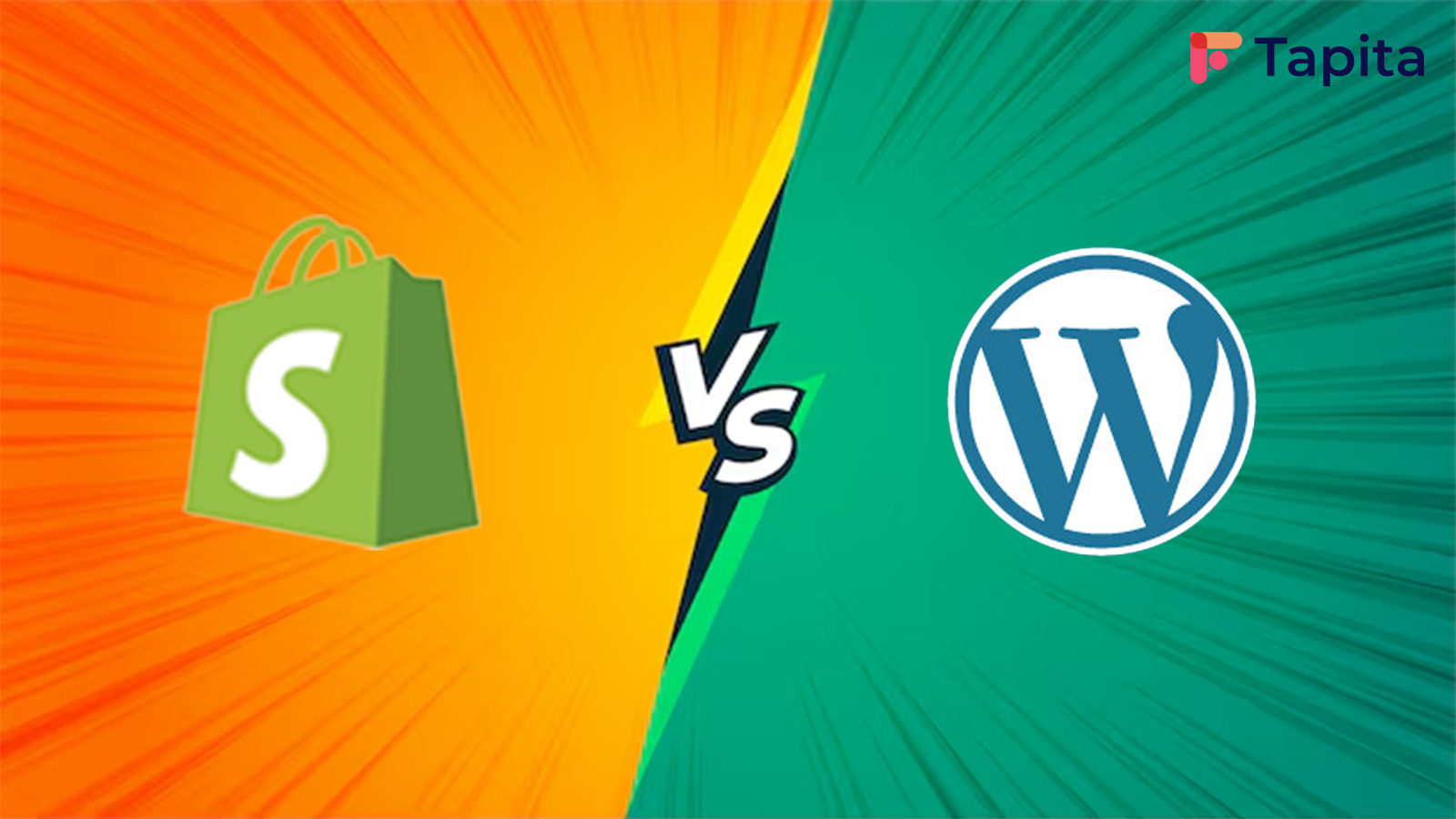As an e-commerce business owner, choosing the right platform for your online store can make all the difference in your success. In the world of e-commerce, Etsy and Shopify are two of the biggest and most popular platforms available. Etsy and Shopify are both powerful tools that offer unique features and benefits to sellers. While both offer unique advantages for sellers, they also have key differences that can make one more suitable for certain businesses. In this article, we’ll take a comprehensive look at Etsy vs Shopify, comparing their features, pricing, ease of use, and more.
Overview of Etsy
Etsy is an online marketplace that brings together sellers and buyers of handmade items, vintage goods, and craft supplies. It was founded in 2005 and has since grown to become one of the largest e-commerce platforms in the world. Etsy allows individual sellers to create their own shops and sell their products to customers worldwide. The platform has a strong community feel, with buyers and sellers able to interact through messaging and reviews.
Pros and Cons of Etsy
Pros
- Strong community feel and support
- Low listing fees
- Built-in SEO and inventory management tools
Cons
- Limited customization options
- Higher transaction fees than some competitors
- Focused primarily on handmade and vintage items, may not be suitable for all businesses
Overview of Shopify
Shopify is a complete e-commerce platform that allows businesses of all sizes to create online stores. It was founded in 2004 and has since grown to power over 1 million businesses in over 175 countries. Shopify offers a range of features and tools for businesses, including payment processing, shipping and fulfillment, marketing and sales tools, and more.
Pros and Cons of Shopify
Pros
- Wide range of features and customization options
- Powerful marketing and sales tools
- Scalable and suitable for businesses of all sizes
Cons
- Higher pricing than some competitors
- Transaction fees for using third-party payment gateways
- More complex and overwhelming for some users
Etsy vs Shopify: Key Differences and Similarities
Features and Functionality Comparison
- Product Listing and Management
Etsy allows sellers to list products in their online shops, with options to add multiple photos and detailed descriptions. Sellers can also use Etsy’s search engine optimization (SEO) tools to help their products appear in relevant search results. Etsy also has a built-in inventory management system, making it easy to keep track of products and orders.
Shopify offers a similar product listing and management system, with the added ability to create multiple product variants and options. Shopify’s SEO tools are also robust, with options to customize page titles, meta descriptions, and more. Shopify also has an advanced inventory management system that allows sellers to track stock levels across multiple locations.
- Payment Processing
Etsy offers its own payment processing system, which allows sellers to accept credit card payments, PayPal, and other payment methods. Etsy charges a transaction fee of 5% for each sale, in addition to payment processing fees.
Shopify also has its own payment processing system, Shopify Payments, which allows sellers to accept credit card payments and other payment methods. Shopify charges a transaction fee of 2.9% + 30 cents for each sale, in addition to payment processing fees. Sellers can also choose to use third-party payment gateways, but Shopify charges an additional transaction fee of 2% for these sales.
- Shipping and Fulfillment
Etsy offers a range of shipping options, including USPS, FedEx, and DHL. Sellers can set their own shipping rates or use Etsy’s calculated shipping feature, which automatically calculates shipping costs based on the buyer’s location and the weight and size of the item. Etsy also offers a built-in shipping label tool, making it easy for sellers to print shipping labels directly from the platform.
Shopify also offers a range of shipping options, including USPS, UPS, and DHL. Sellers can set their own shipping rates or use Shopify’s calculated shipping feature. Shopify also has a built-in fulfillment system, allowing sellers to easily manage and track orders and shipments.
- Marketing and Sales Tools
Etsy has various marketing and sales tools to help sellers promote their products and increase sales. This includes the ability to offer discounts and coupons, create sales and promotions, and use Etsy’s built-in email marketing tools.
Shopify also offers diversified marketing and sales tools, including the ability to create discounts and promotions, use email marketing tools, and integrate with social media platforms like Facebook and Instagram. Shopify also has an app store with a range of marketing and sales apps, allowing sellers to customize their marketing strategies.
- Design and Customization Options
Etsy offers limited design and customization options, with sellers only able to customize the header and banner of their shop. However, Etsy does allow sellers to add custom HTML and CSS to their shop for more advanced customization.
Shopify offers multiple design and customization options, including the ability to choose from a range of templates and themes or create a custom design. Shopify also has a built-in website builder, allowing sellers to create pages and customize their website’s layout.
Pricing Comparison
Etsy charges a listing fee of 20 cents per item listed, with each listing lasting for four months. Etsy also charges a transaction fee of 5% for each sale, in addition to payment processing fees.
Shopify provides 3 main pricing plans, starting at $25 per month for the Basic Shopify plan. This includes all of Shopify’s basic features, with transaction fees of 2.9% + 30 cents per sale. Shopify’s other plans include the Shopify plan, which costs $65 per month and includes lower transaction fees, and the Advanced Shopify plan, which costs $399 per month and includes even lower transaction fees and more advanced features.

Ease of Use Comparison
When it comes to ease of use, both Etsy and Shopify have their own strengths and weaknesses.
Etsy is known for its user-friendly interface and simple setup process. The platform is designed specifically for selling handmade and vintage items, which means that it’s relatively easy to navigate and understand. The process of listing items for sale is straightforward, with easy-to-follow steps for adding photos, descriptions, and pricing information. Etsy also provides helpful resources and tutorials to help sellers get started and grow their businesses.
Shopify, on the other hand, is a more complex platform that offers a wider range of features and customization options. While this can be overwhelming for some users, Shopify does offer a user-friendly interface and intuitive setup process. Shopify’s drag-and-drop website builder makes it easy to create a custom website without any coding experience, and the platform’s app store provides a wide range of add-ons and integrations to enhance your store’s functionality.
In terms of managing your store, both platforms offer easy-to-use dashboards where you can manage orders, track inventory, and view sales data. However, Shopify’s dashboard is more robust and customizable, allowing you to tailor it to your specific business needs.
Overall, both Etsy and Shopify offer easy-to-use platforms with intuitive interfaces and helpful resources. The choice between the two will depend on your business needs and preferences. If you’re looking for a simpler, more straightforward platform, Etsy may be the better choice. If you value flexibility and customization options, and are willing to invest more time into learning the platform, Shopify may be the better option.
Customer Base and Traffic
Etsy has a large and dedicated community of buyers and sellers, with over 96.3 million active buyers and 4.4 million active sellers as of 2021. The platform’s focus on handmade and vintage items, as well as its community-driven approach, has helped to build a loyal following among customers who are passionate about supporting independent creators.
Shopify, on the other hand, is a more general e-commerce platform that caters to businesses of all sizes and industries. As a result, it has a much larger customer base and more traffic overall, with over 1 million businesses using the platform and over 572 million buyers making purchases in 2021; 649 million people made a purchase from a Shopify store in 2022.
One advantage of having a larger customer base and more traffic is that there is potential for higher sales and revenue. However, it also means that there is more competition, which can make it harder to stand out and attract customers.
Another important factor to consider is the type of customers that each platform attracts. Etsy’s community-driven approach and focus on handmade and vintage items tend to attract customers who are looking for unique and one-of-a-kind products. In contrast, Shopify’s larger and more general customer base means that it attracts a wider range of customers with varying interests and needs.
Which Platform is Right for You?
Choosing between Etsy and Shopify ultimately depends on your business’s unique needs and goals. If you sell handmade or vintage items and value a strong community feel, Etsy may be the better choice for you. If you’re looking for more flexibility and customization options, as well as powerful marketing and sales tools, Shopify may be the better choice.
Conclusion
Etsy and Shopify are two of the biggest and most popular e-commerce platforms available today, each with their own unique features and benefits.
When choosing between Etsy and Shopify, it’s important to consider factors such as pricing, design and customization options, shipping and fulfillment, marketing and sales tools, and ease of use. By understanding the differences between these two platforms, you can make an informed decision and choose the platform that best meets your business’s needs.
In the end, both Etsy and Shopify offer powerful tools and resources to help you succeed in the world of e-commerce. With the right strategy and approach, you can build a successful online business on either platform and reach customers all around the world.




